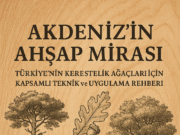The Montreal Protocol or, for its long name, the Montreal Protocol on Substances that Deplete the Ozone Layer, operforation of the zone layer It is an international agreement designed to stop the production of many substances that cause
It was agreed upon in Montreal in 1987 and entered into force in 1989. Since then, nine additions have been made to the agreement. They were held in London in 1990, Nairobi in 1991, Copenhagen in 1992, Bangkok in 1993, Vienna in 1995, Montreal in 1997, Australia in 1998, Additions were made in Beijing in 1999 and most recently in Kigali in 2016.
The Kigali annexation has been accepted but has not yet entered into force as of November 2016. The Montreal Protocol was signed under the Vienna Convention for the Protection of the Ozone Layer, which was ratified in 1985 and entered into force in 1988 and served as a framework convention for the Protocol. The objectives of the Convention were to encourage cooperation through research and exchange of information and systematic observations on the effects of human activities on the ozone layer, and to take legislative or administrative measures against activities likely to adversely affect the ozone layer. The Vienna Convention did not require countries to take concrete steps to control ozone-depleting substances. Therefore, in accordance with the provisions of the Convention, the countries of the world have accepted the Montreal Protocol. The Vienna Convention and the Montreal Protocol were the first universally ratified treaties in the history of the United Nations, with 197 ratifications by 196 states and the European Union. The protocol is therefore considered an outstanding example of international cooperation due to its wide adoption and implementation.
According to the report published by UNEP in 2014, it is stated that, as a result of the protocol, the ozone layer in Antarctica, where the ozone hole gradually recovers, is expected to return to 1980 levels between 2050 and 2070. It is structured around various hydrocarbon groups called These are chlorofluorocarbons (CFC) and hydrochlorofluorocarbons (HCFC). These substances were widely used in appliances such as refrigerators, air conditioners, fire extinguishers, and in industries such as aviation, agriculture, and electronics. Hydrofluorocarbons (HFC), which do not contain chlorine, have been used instead of these gases.
However, although HFCs do not harm the ozone layer, as they do not contain chlorine, high






























